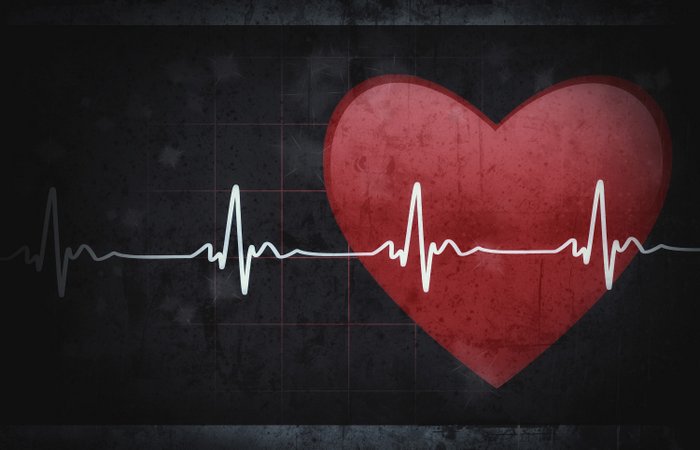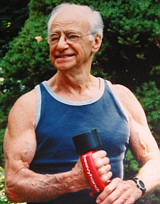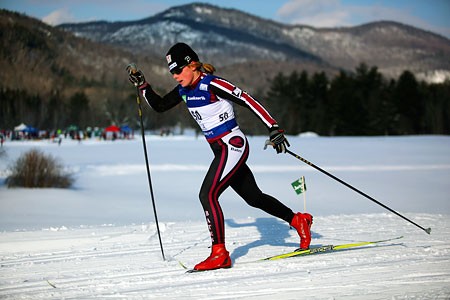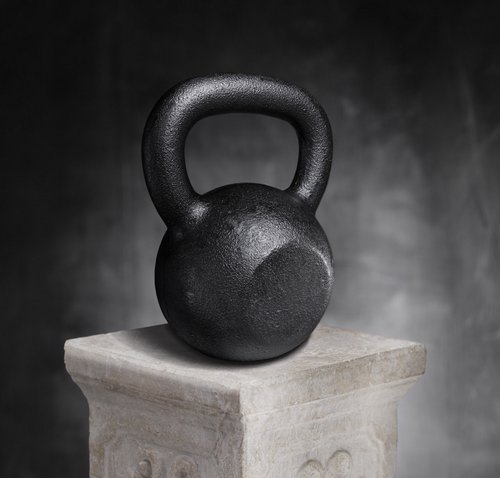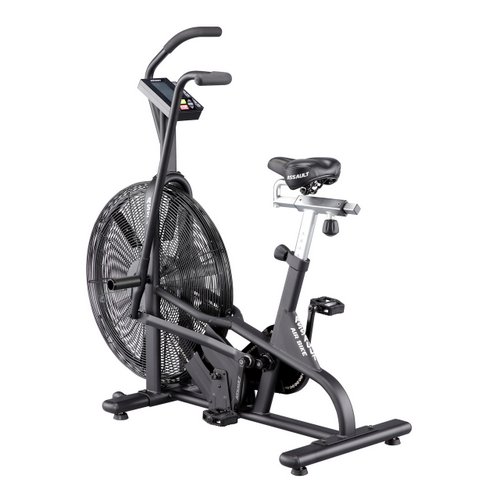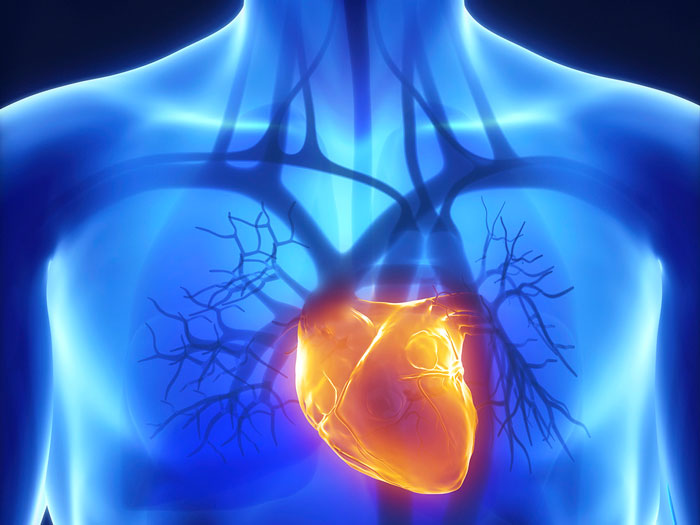
The Fan Bike has been around for decades. All mechanical, this cardio push/pull device has stood the test of time. It is the technological equivalent of a diesel locomotive engine and has the obvious advantage of making the arms equal partners in creating the sum total of the aerobic/anaerobic effort. The Fan Bike also allows the trainee to encounter the requisite resistance as they go backwards, this effectively doubles the number of Fan Bike exercises. One can pedal using ‘legs only’ forward, or push using ‘arms only.’ We can even use a single limb at a time. Pace possibilities are endless: we can push, we can pull, we can push and pull. We can pedal forward and backward, with and without the arms. We can vary our speed, duration and pace. The modern fan bike has the ability to monitor rpms (at any given instant) and watts generated. These two readouts make it possible for the user to create cardio categories and establish performance benchmarks.
When we are able to categorize and establish performance personal bests we can periodize our cardio efforts. Using the watts readout, the Fan Bike user can have personal best efforts (expressed in watts generated) in each of the various exercise drills. For example, while pedaling forward, arms and legs together, work up to 100% all-out effort–then make note of the highest watts reading you are able to generate. You now have a personal record for that particular drill, something you can seek to improve upon.
Once you have a concrete benchmark, a number expressing watts or RPMs (or heart rate, or all of them) the gains lie in attempting to equal or exceed these current personal bests. You can establish numeric benchmarks in over a dozen separate and distinct Fan Bike arm or leg possibilities.
Over time, this continual striving to exceed current limits has proven to be the true path for obtaining real results. Long-term adherence to a serious Len Schwartz-inspired aerobic protocol, wedded to a Fan Bike, has proven to be an inspired pairing, a “long strength” marriage-made-in-heaven.
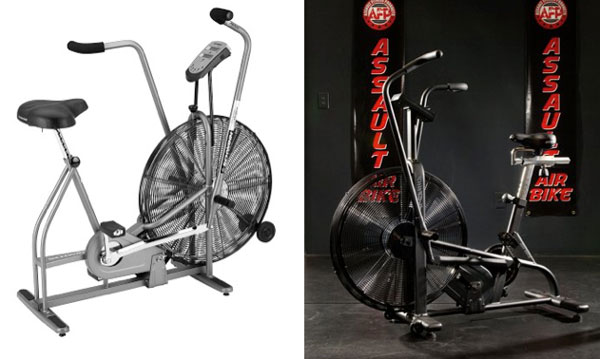
We can use the Fan Bike in every imaginable way, establish mathematical benchmarks in every imaginable category; and then seek to continually approach, equal or exceed these benchmarks in some way. We will go 100% in every training session. Adhere to this protocol for a protracted period and reap radical increases and improvements in endurance and sustained strength. Cardio capacity will improve dramatically; the metabolism will accelerate.
If your nutrition is in sync with the exercise, body fat will be mobilized and oxidized at an astounding rate. The body, through skillful blending of nutrition and exercise will “relearn” how to use stored body fat as fuel, and drain the various fat storage areas of the human body.
Muscles subjected to intense cardio for protracted periods will reconfigure themselves in response to the intense and continual self-inflicted stress. Mitochondria are cellular blast furnaces that live within every muscle. Nature allots us a certain “mitochondrial density” at birth. Over time, as we age and abuse ourselves, the mitochondria will start to “flame out” and die. Science indicates that sedentary individuals experience premature mitochondrial flame out. Conversely, those who engage in intense physical exertion, profound and prolonged, forestall burnout. Further, if the exercise is intense, prolonged and consistent, new mitochondria are actually created to deal with the continual stresses. New cellular blast furnaces are constructed within the muscles that are constantly worked and stressed.

Mild and moderate cardio efforts are insufficiently intense to cause the creation of new mitochondria and the resulting muscle reconfiguration. When we exceed capacities and establish new performance levels when we train with intensity and consistency, the body is compelled to construct new cellular blast furnaces. Nature intended and designed the human body to possess strong, powerful muscles with a high mitochondrial density to enable a muscle to operate at optimal physiological efficiency. We can really get after “it” when we use the Fan Bike. By going fast and in multiple directions with all our limbs, we derive maximum benefit from our cardio efforts.
Why This Tool?
The Len Schwartz HeavyHands-inspired protocol was as dead as Sanskrit scrolls–it was an ancient, long forgotten strategy. Now, we will resurrect his approach and match it up with a “modern” tool. The venerable Fan Bike is not really modern, but it is the perfect cardio tool for reenacting and reviving the defunct (yet still potent) HeavyHands strategies. Like HeavyHands, the Fan Bike allows and enables the trainee to stress one, two, three or all four limbs, individually or together, forwards or backwards. The cardio effort can be “shuttled” around the body in a very strategic and calculated fashion.
The underlying, unifying concept is to work up to 100% of exertion max in a wide range of aerobic exercises and drills, all done on the Fan Bike. We will work the arms and legs separately, or together, we can alternate cardio “zones,” we can be clever and innovative in our exercise sequencing. Once they grasp the fundamental concepts, the athlete is then able to create their own exercise templates. Once the techniques and tactics are mastered, the trainee then purposefully modulate the exercise intensity to create the desired cardio inroad and achieve the overall desired physiological effect.
Quad-Limb Fan Bike Core Protocol
For each Fan Bike exercise, the procedure is the same, regardless of the drill:
- Warm-up gradually: pedal and/or push-pull, light and easy…
- Gradually pick up the pace: warm-up to and maintain 50% of capacity…
- Allow the body to acclimate at each subsequent intensity level
- Move to 70% of capacity: the body is now completely awake and alert
- Move to 85%
- Move to 100% of what you are currently capable of–today, at this time
- Hold 100% for as long as is comfortable
- Be cognizant that capacity is a shifting target and will shift, session to session
- Gains occur when we equal or exceed these (diminished or enhanced) capacities
- Log the watts, RPMs, and, if possible, heart rate, when attaining 100% max
Once we achieve a 100% all-out max effort in an exercise, we relax and go into the slowest, easiest warm-up iteration of the next sequenced exercise in the cardio chain. Our procedure is to hit 100% of capacity in each exercise, and then immediately shift into the easiest version of the next exercise. We sequence exercises in such a fashion that whatever muscle or muscle-groups are taxed to 100% are rested as another “section” of the body takes over the cardio effort. We again and again hit a 100% effort. Our report card is the watts, the RPMs and the heart rate monitor reading.
- 100% means that you go as fast as you can go, at that instant of time. Your capacities might be diminished, normal, or enhanced. After a thorough warm-up, exert to 100% in each of the selected exercises.
- We can continually assault our limits, safely and effectively if we train smart. All 100% efforts need to be preceded by a comprehensive warm-up. We do all that we can do (safely and sanely) on this particular day at this time.
- The gains we seek (improved endurance, increased athletic performance, better body fat percentile, quicker, lighter and healthier, a radically improved physique) are attained by equaling or exceeding current limits.
Specific body parts are taxed maximally, then rested while other body parts are bought online and taxed maximally in turn; the rotation goes on and on without repeating. This strategy allows us to repeatedly exert maximally. Over the course of the entire cycle, this particular Fan Bike protocol requires the trainee hit a 100% maximum twenty times in a row.
Fan Bike Training Template: The 20-Exercise “Cycle”
- Arms and legs forward
- Legs only forward
- Legs only backwards
- Arms only push (bench press the handles)
- Arms only pull (over-grip row)
- Arms only pull (under-grip row)
- Arms only push and pull (burn it out, fast as possible)
- Legs only forward
- Legs only backward
- Legs & arms forward (standing up)
- Legs & arms backwards (standing up)
- Left leg forward
- Right leg forward
- Left leg backwards
- Right leg backwards
- Right arm forward (push)
- Left arm forward
- Right arm backwards (pull)
- Arms & legs forward
- Arms & legs forward (stand)
Cool Down: arms & legs forward
Work up to a 100% push or pull max on every exercise. This cycle will take between 10-15 minutes to complete. In each instance we seek to go as fast as we can go (within safe, sane and rational limits) then immediately shift into the next exercise. Use the slow ramp up in each exercise. Starting a new exercise is the recovery period from the previous exercise. In about the time the athlete fully recovers, it is time to push the accelerator to the floorboard for the current exercise: twenty times we “max out”, cool down, recover, then hit it again.
Check out the video below as Chris demonstrates a portion of the Fan Bike protocol.
“Cardio zone” training strategically rotates training stress: sometimes we work all four limbs, sometime we work them in pairs or singly–we “spread out” the cardio effort. We rotate the exercises in an effort to keep the intensity high for an extended period of time. We can attack all four limbs simultaneously, we can blast the legs while resting the arms, we can blast the rested arms while resting the blasted legs. Further, we can attack one limb at a time while purposefully resting the other three. Finally we can do all of this magical stuff backwards–doubling our exercise universe. The sheer number of possibilities is positively mind-blowing.
Compelling and Persuasive
Knowing what you now know, why would anyone remotely interested in purchasing a cardio training device select an aerobic tool that could only go in one direction, forward, and that only uses the legs to generate 100% of the cardio effort?
Aerobic tools that depend on legs alone to create the totality of the exercise effort are woefully inadequate when compared to the astounding possibilities of quad-limbed cardio. Single-limb cardio and reverse-direction cardio are exciting new avenues of potential progress.
Consistent and intense cardio, cardio with a purposeful muscular effort included, builds locomotive-like endurance while infusing muscles with new mitochondria. The quality of the aerobic and anaerobic effort generated (using a multitude of exercise variations combined with the 100% effort) is designed to exponentially magnify endurance, release endorphins, build mitochondria and burn off stored body fat. That is a mighty list of highly desirable benefits!
Intense cardio triggers the release of endorphins, a telltale precursor of the adaptive response. The appearance of endorphins is a positive indicator that the training effort was productive. Intense cardio improves internal plumbing, flushes arterial walls, power-washes clinging plaque and sludge as torrents of blood rip through veins in a supercharged circulatory rush. The heart muscle accelerates, and toxins are removed as nutrients are carried to the muscle while the athlete achieves Len’s ideal of “optimal aerobic efficiency”.
Cardio exercise is a critical component in the eternal quest to physically transform. The need for cardio exercise is not in question–what is in question is the optimal tool, mode, and method. We feel the Fan Bike is a fabulous tool (not the only tool, but a valid tool for our fitness toolbox) and when paired with Len’s particular and unique protocols, we can create an exceedingly effective way to obtain optimal results from our cardio efforts.
Comparing a contemporary stationary bike, a standard treadmill or any “legs only” cardio device to a Fan Bike is akin to comparing checkers to chess. Why be purposefully stuck with a one-dimensional workout tool when you can explore four dimensions and open up an exciting new cardio universe?
Editor’s Note:
The Fan Bike will give you all that you can handle as a cardio tool. Marty’s protocol can be very taxing. Keep in mind the daily state of your “Stress Cup” (see Strong Medicine for more on this) and feel free to alter the order of exercise and volume to suit your daily needs. Adequate recovery is just as important as exercise intensity. I filmed the above video the day after a hard jiu jitsu session. Five minutes was about all that I needed (and could handle) to get a beneficial adaptive response while also avoiding overtraining. In Part III, I am going to discuss some of the science behind the benefits of four-limb cardio and specific advantages of using the Fan Bike.
***
Marty Gallagher is the author of Strong Medicine, The Purposeful Primitive and Coan: The Man, The Myth, The Method. Gallagher coached the United States team that won the IPF powerlifting world team title in 1991. He is a 6-time national masters champion and national record holder. He was the IFF world master powerlifting champion in 1992. He currently works with elite athletes, spec ops military and governmental agencies.
